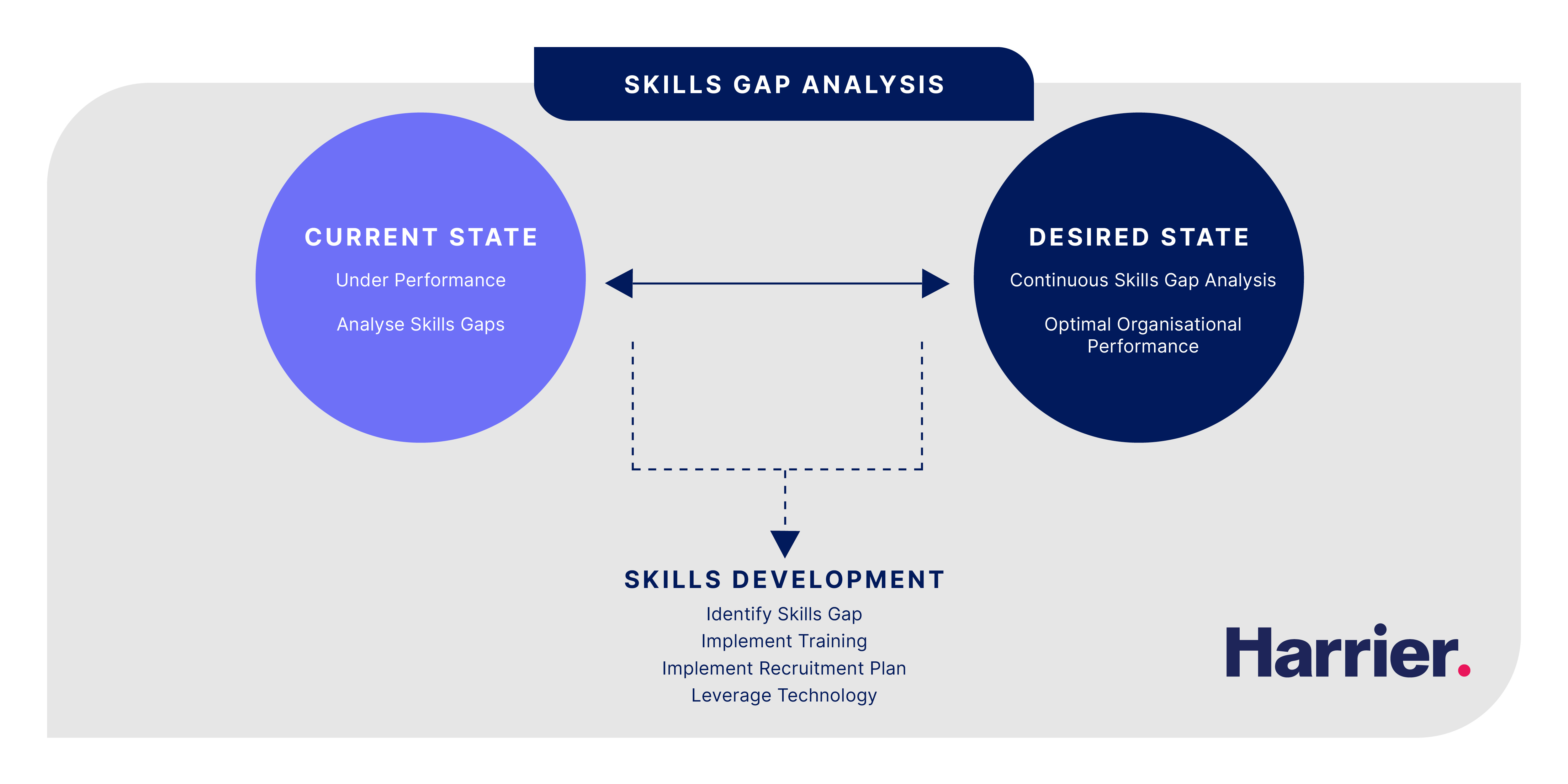How to harness Skills Gap Analysis to Combat Workforce Shortages
- Data-Driven Skills Gap Identification: Leaders must combine internal performance metrics with external industry trends to pinpoint specific skill deficiencies.
- Future-Proof with Proactive Skill Development: Engaging with external experts and implementing scenario planning helps organisations stay ahead. Early identification of future skill requirements allows for targeted training and recruitment strategies, ensuring the workforce remains competitive and adaptable.
- Foster a Learning Culture Supported by Technology: Establishing a continuous learning environment supported by technological tools enhances skill development and adaptability.

Recognising the current skills gap is the first step towards addressing it. A skills gap occurs when there is a disconnect between the skills employees possess and those required by the organisation, and is often exacerbated by a shortage of talent available in the market. This gap can hinder productivity, innovation, and growth. To effectively identify these gaps, leaders should combine an internal analysis with an external industry review.
Analysing internal data can reveal patterns and areas where skills are lacking. Performance reviews, employee feedback, and productivity metrics provide valuable insights. Additionally, external data from industry reports and market analyses can highlight broader trends and emerging skills required to stay competitive. By combining these data sources, leaders can pinpoint specific competencies that need development within their teams.
Future-Proofing Through Skills Identification
Anticipating future skill needs is essential for long-term success. Industry trends, technological advancements, and market predictions offer valuable clues about the skills that will be in demand. For instance, the rise of artificial intelligence, automation, and digital transformation means that technical skills such as data analysis, coding, and cybersecurity are becoming increasingly important.
Knowledge is power. Leaders need to understand micro and macro trends affecting their industry. Consulting with external specialist contractors and thought leaders will help businesses stay informed and help to align business objectives with a changing market. Scenario planning and workforce forecasting can help organisations anticipate changes and prepare accordingly. By identifying future skill requirements early, organisations can implement targeted training programs and recruitment strategies to bridge these gaps.
Building a Learning Culture
Creating a continuous learning environment is vital for skill development and adaptability. A learning culture encourages employees to continually acquire new skills and knowledge, aligning their growth with organisational goals. This culture should be supported by leadership and embedded into the organisation's values and practices.
Leaders can promote a learning culture by providing access to training resources, encouraging knowledge sharing, and recognising employee achievements in skill development. Regular workshops, online courses, and mentorship programs can offer diverse learning opportunities. Additionally, fostering a safe environment where employees feel comfortable taking risks and learning from failures is crucial for continuous improvement.
Leveraging Technology for Skill Development
Digital platforms and tools play a significant role in identifying and developing skills. AI-driven skill assessment tools, for instance, can analyse employee capabilities and suggest personalised learning paths. These tools can identify skill gaps, recommend relevant training, and track progress over time.
E-learning platforms offer flexible and accessible training solutions. Employees can engage with interactive content, participate in virtual classrooms, and collaborate with peers globally. Gamification elements can make learning more engaging and enjoyable. Furthermore, technologies like virtual reality (VR) and augmented reality (AR) provide immersive learning experiences, particularly for technical and hands-on skills.
Organisations should invest in the right technological solutions to support their skill development initiatives. By integrating these tools into their learning and development programs, leaders can ensure employees have the resources needed to stay current and competitive.
Conclusion
Leaders must recognise and address current skills gaps, anticipate future needs, foster a culture of continuous learning, and leverage technology to support skill development. By doing so, organisations can build a resilient and adaptable workforce, ready to meet the challenges of today and tomorrow. Embracing these strategies will not only enhance individual and organisational performance but also drive innovation and long-term success. For an obligation free consultation to better understand the technological trends and changing external environment, contact the team at Harrier today.
GET STARTED
